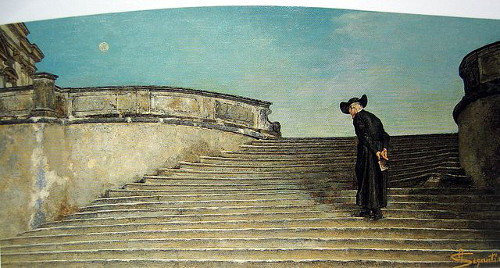
Imagine a staircase with 1001 stairs, numbered -500 to 500. You’re standing in the middle, on stair 0, and you want to reach the top. On each step you can play either of two coin-flipping games — if the result is heads then you move up a step; if it’s tails then you move down a step:
- In game 1 you flip coin A, which is slightly biased: It comes up heads 49.5 percent of the time and tails 50.5 percent.
- In game 2 you use two coins, B and C. Coin B produces heads 9.5 percent of the time and tails 90.5 percent. Coin C produces heads 74.5 percent of the time and tails 25.5 percent. In game 2 if the number of the stair you’re on is a multiple of 3 then you flip coin B; otherwise you flip coin C.
Both of these are losing games — if you played either game 1 or game 2 exclusively, you’d eventually find yourself at the bottom of the staircase. But in 1996 Spanish physicist Juan Parrondo found that if you play the two games in succession in random order, keeping your place on the staircase as you switch between them, you’ll rise to the top of the staircase. It’s not, properly speaking, a paradox, but it’s certainly counterintuitive.
This example is from David Darling’s Universal Book of Mathematics. (Thanks, Nick.)
